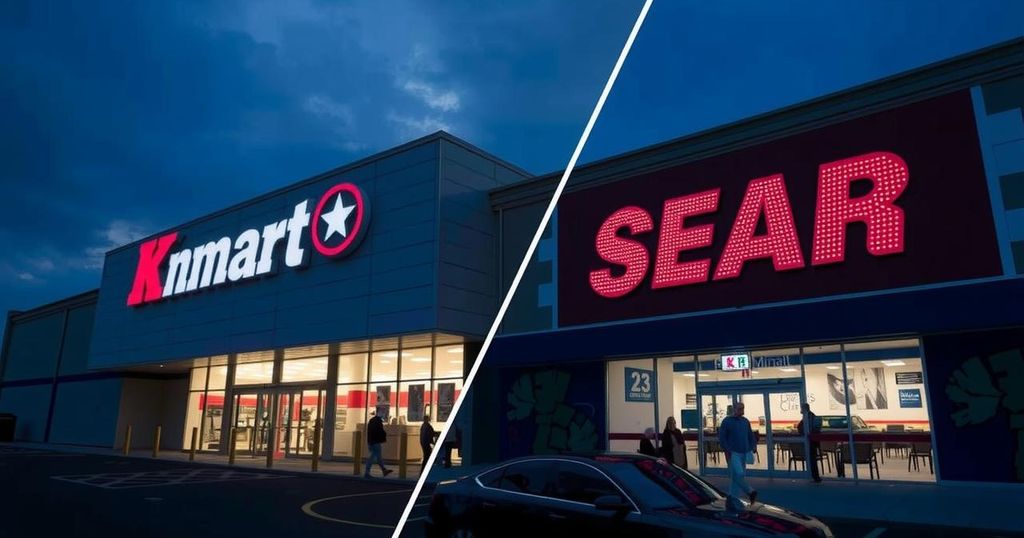The closure of the final full-service Kmart store symbolizes the decline of both Kmart and Sears, which once dominated American retail. The merger between these two companies was intended to enhance their operations; however, poor leadership and ineffective cost-cutting strategies led to significant losss. Currently, only a few stores remain open, and limited job opportunities exist, illustrating the diminished state of these once-great brands.
The retail landscape has dramatically shifted with the closure of the last full-service Kmart store in the continental United States, marking the end of an era for a brand that began in 1899. The closure of the Long Island store illustrates the decline of Kmart, which at its peak operated over 3,000 locations. Concurrently, Sears—another former retail powerhouse—has also faced a similar fate, evolving from a pioneer in mail-order retailing to a brand struggling to retain its relevance. Sears, established in the late 1800s, revolutionized the shopping experience in America and was known for its diverse offerings, including insurance and tools. However, the merger with Kmart in 2005, a move described as a disastrous decision by critics like Mark Cohen, has contributed to both companies’ decline. The expectation that merging operations would yield efficiency through cost-cutting strategies has proven misguided, ultimately leading Sears to file for Chapter 11 bankruptcy in 2018 due to poor leadership decisions and ineffective strategies. Despite these closures, limited operations remain. Currently, there are only nine Sears stores and five Kmart stores, including one in Guam and three in the U.S. Virgin Islands. Both retailers maintain an online presence, although their digital platforms do not match the competitive standards set by leading e-commerce companies such as Amazon. Kmart serves primarily as a marketplace for third-party sellers, while the Sears website highlights its brand-name appliances although the structure falls short of the required quality for competition. An examination of employment opportunities reveals that both companies still offer positions within their limited framework. Listings include roles for seasonal cashiers and service technicians that require extensive travel, available across various states. These positions offer competitive pay and benefits, yet they underscore the diminished operational scope of both brands in today’s market.
Kmart and Sears were once titans of American retail, with Kmart specializing in discount retail and Sears offering a wide array of products including appliances, tools, and even insurance services. Both brands experienced significant declines owing to a combination of factors such as poor management decisions, changing consumer habits, and inadequately adapting to the rise of e-commerce. The merger between Kmart and Sears was intended to create synergy, but instead, it became a significant catalyst for decline as both entities struggled to stabilize in an increasingly competitive marketplace. This historical context is vital to understanding their current status and the lingering brand legacy.
The closures and operational declines of Kmart and Sears exemplify a broader trend affecting traditional retail. The inability to innovate and effectively compete in the digital landscape has diminished their market presence. Although some job opportunities remain, the retail giants’ glory days seem irrevocably lost in history. Such cases highlight the importance of adapting to changing market dynamics and consumer preferences for any retailer aiming for long-term sustainability.
Original Source: www.dailygazette.com

Leave a Reply